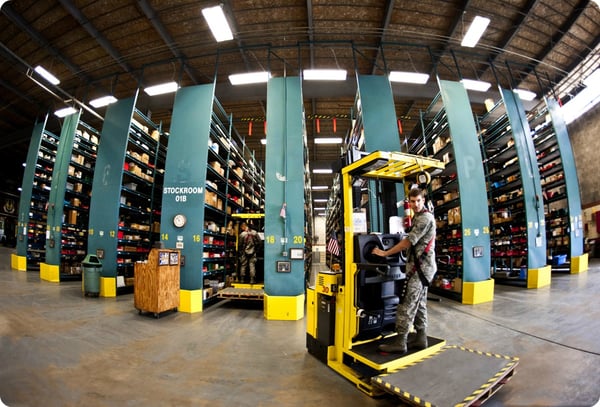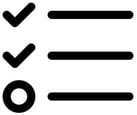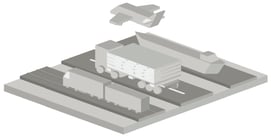
Are you relocating to a new facility? There are few things more stressful, costly, and time-consuming in the industrial world than plan relocation. While the new facility may offer more space, greater capacity, and perhaps increased efficiency, the process of moving into that facility could pose any number of risks. Your production could be disrupted. Equipment or inventory could be damaged. Costs could run over projections.
It doesn’t have to be this way. As is the case with most projects, the key to a successful relocation lies in the planning. You probably have documentation for every process in your facility, from product design to production to distribution and more. Your relocation should be no different. A well-documented, thoughtful relocation plan can eliminate or minimize some of the most dangerous risks you may face.
Perhaps the most important part of any relocation timeline is the schedule itself.
If this is your first plant relocation, you may not know where to start in developing your plan. You could choose to work with a third-party plant relocation consultant. They can help you develop the plan and execute it so you stay within budget and on your timeline.
However, even if you don’t choose to work with an outside consultant, you can still develop an effective planning document on your own. Below are a few areas of focus that should be included in your plan. Use these as a starting point and then customize your plan to meet your own needs and goals.
Risk Assessment
You can’t minimize risks if you haven’t identified them. Start by creating an inventory of potential risks that could threaten the schedule, cost, or successful outcome of the relocation. What are the threats that could arise?
For instance, perhaps you could suffer damage to equipment or inventory. Maybe the relocation could threaten production on works-in-progress, threatening your ability to meet important deadlines. Perhaps you could find out in the relocation process that the new facility doesn’t have utility outlets and jacks in the correct areas to accommodate your machinery.
The truth is that the list of potential risks could be very long. It’s up to you to identify which risks are the most likely to occur and which would be the most costly to deal with. You may want to assign a score or weighting to each risk so you know which are most deserving of your attention.
Layout Review
Next, consider reviewing the layout of the new facility. The layout should provide a great deal of information. It should tell you how much space you have in certain areas, where jacks and outlets are located, where loading docks and other important entry points are located, and much more.
As part of your plan, create a new layout that overlays your equipment, shelving, and other components on top of the facility map. Your moving staff can then use this layout as a guide during the relocation process. The layout should answer most questions about where equipment and inventory should go in the new building.
Equipment Condition Check
 You’ll also want to do a full review of your equipment and machinery before you start the relocation process. This is helpful for a couple of reasons. First, it gives you a chance to take inventory of the current state of your equipment. You may notice defects or maintenance needs that were previously unknown. You may even decide that some machinery should simply be replaced rather than relocated.
You’ll also want to do a full review of your equipment and machinery before you start the relocation process. This is helpful for a couple of reasons. First, it gives you a chance to take inventory of the current state of your equipment. You may notice defects or maintenance needs that were previously unknown. You may even decide that some machinery should simply be replaced rather than relocated.
More importantly, though, you can use this review to compare to your equipment condition in the new facility. If a piece of machinery has damage that didn’t exist before the relocation, you should be able to backtrack through the process to see where the damage occurred. Be sure to document your equipment review so you can easily make comparisons later.
Schedule and Relocation Timeline
Perhaps the most important part of any relocation timeline is the schedule itself. The relocation schedule tells your staff and moving partners when to move which pieces. It says when certain pieces of equipment should be broken down, packed, loaded, and transported to the new facility.
It’s possible that your schedule could be very detailed. That’s especially true if you’re trying to continue production during the moving process. You may have some inventory and equipment that need to stay operational in the old facility while you simultaneously relocate into the new facility. If so, you’ll likely need a highly-detailed and specific timeline to guide everyone involved in the relocation.
Packaging and Transit Specifications
Another important component is packaging and transport, especially when it involves your high-value equipment. Insufficient packaging could cause serious damage, costing you a substantial amount of money and causing production delays.
 In your relocation plan, create guidelines for how equipment and inventory should be disassembled, packaged, and reassembled to ensure quality. You may need a packaging partner to help you identify potential risks and design protective packaging elements.
In your relocation plan, create guidelines for how equipment and inventory should be disassembled, packaged, and reassembled to ensure quality. You may need a packaging partner to help you identify potential risks and design protective packaging elements.
Also consider elements and processes that can help you track your packages and materials through the relocation process. For instance, you may want to use a barcode system so your team can scan parts and packages and update their status in real-time. You could also use photo documentation software to capture the condition of your parts and materials as they are packaged and unpackaged.
Testing
Finally, you’ll want to test all of your machinery, equipment, inventory, and other materials to ensure that they are in good condition and working properly. It’s better to discover these issues during the relocation process than when you’re ready to start production. You may find that a machine doesn’t have the utility connections it needs at a certain location in the new facility. Or you may find that a piece of equipment was reassembled incorrectly. Again, take time to check these items immediately after your relocation is complete.
Developing a relocation plan is a critical first step in the relocation process. Without a plan, you open yourself up to a wide range of risks. Many of those risks can be minimized or eliminated altogether with a detailed planning document.
You may find that a relocation consultant can help you create a more effective relocation plan and may even be able to execute the plan on your behalf. That way, you can stay focused on your business and managing production. ![]()






Let Us Know What You Thought about this Post.
Put your Comment Below.